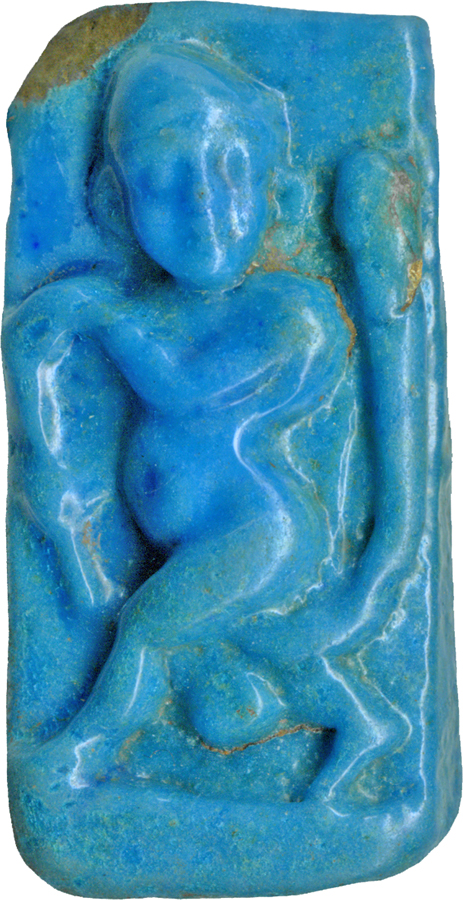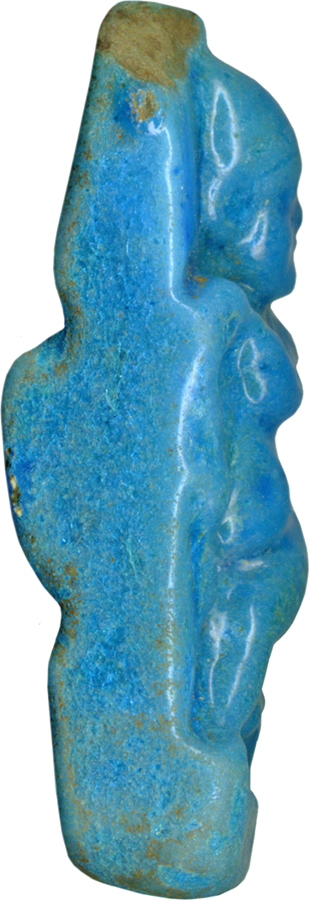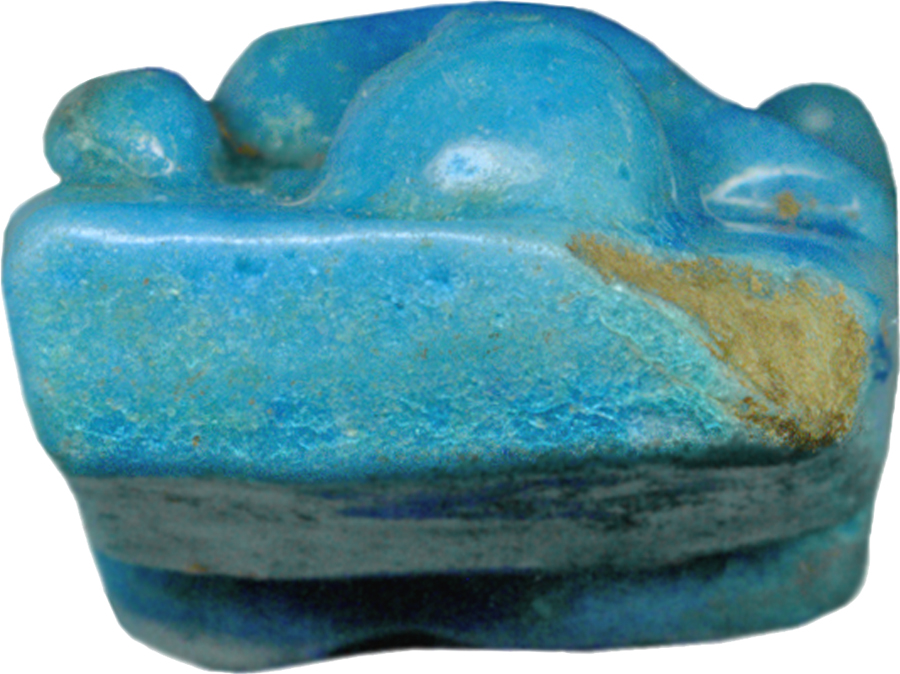Plaque with a Dancing Dwarf with Large Phallus
Dwarfs played an important role in Egyptian society. Dwarfism-a genetic condition characterized by unusually short stature and shortened limbs-is frequently represented in Egyptian tomb reliefs and statues, and the remains of dwarfs have been found in tombs associated with the royal cemeteries. Dwarfs held important positions in the administration of the ancient Egyptian government, and they also worked as jewelers, performed in special rituals (in which they were called "god's dancers"), or served as midwives. Some were believed, because of their unusual appearance, to have supernatural powers and a special relation to the gods.
The dancing posture and the oversized phallus of this dwarf-figure should secure virility and male potency for the owner in this life as well as the afterlife.
Provenance
Provenance (from the French provenir, 'to come from/forth') is the chronology of the ownership, custody, or location of a historical object. Learn more about provenance at the Walters.
Abemayor, Cairo [date and mode of acquisition unknown]; Henry Walters, Baltimore, 1930, by purchase; Walters Art Museum, 1931, by bequest.
Exhibitions
| 2006-2007 | Daily Magic in Ancient Egypt. The Walters Art Museum, Baltimore. |
Conservation
| Date | Description | Narrative |
|---|---|---|
| 7/23/1959 | Treatment | cleaned |
| 7/30/1998 | Examination | examined for condition |
| 10/10/2006 | Treatment | cleaned |
Geographies
Egypt (Place of Origin)
Measurements
H: 1 11/16 x W: 11/16 x D: 7/16 in. (4.21 x 1.76 x 1.15 cm)
Credit Line
Acquired by Henry Walters, 1930
Location in Museum
Not on view
Accession Number
In libraries, galleries, museums, and archives, an accession number is a unique identifier assigned to each object in the collection.
In libraries, galleries, museums, and archives, an accession number is a unique identifier assigned to each object in the collection.
48.1651












